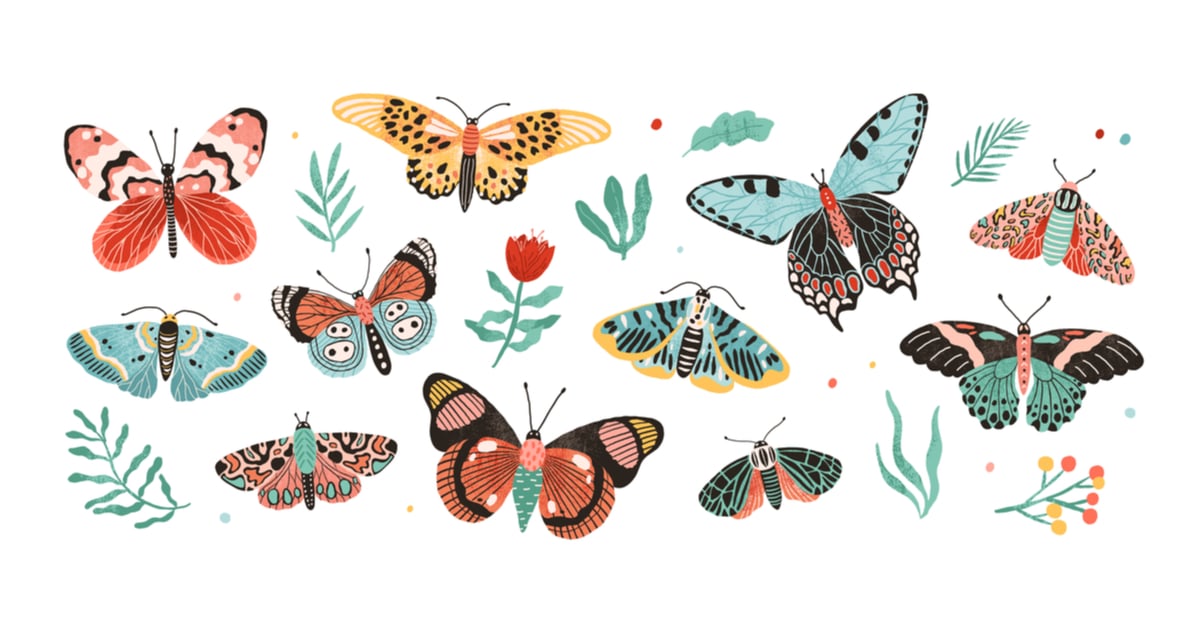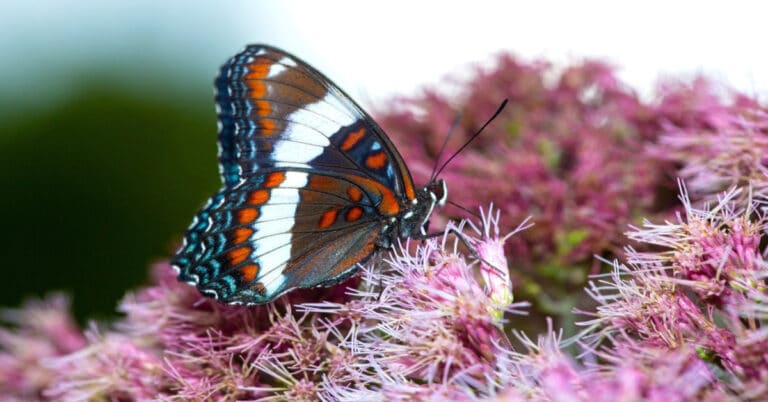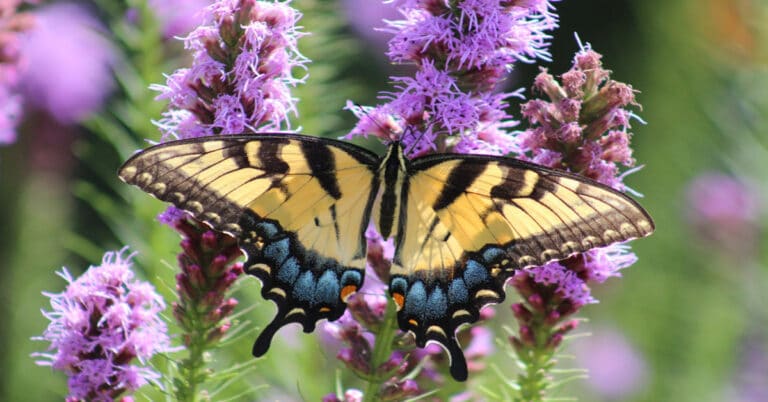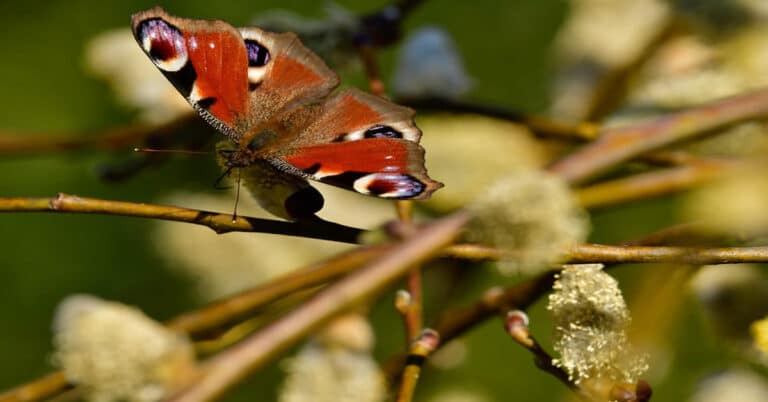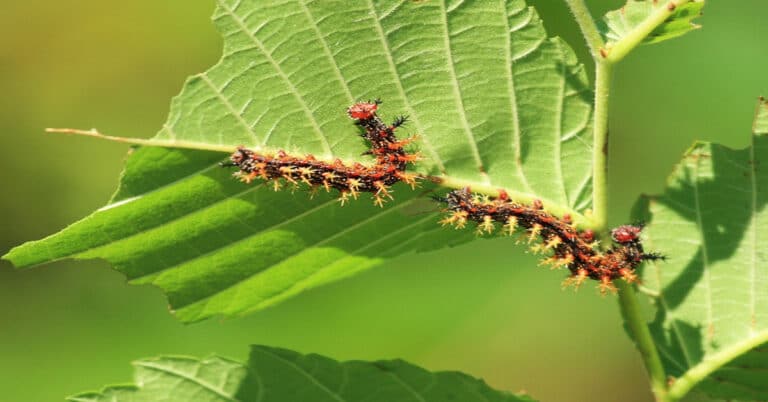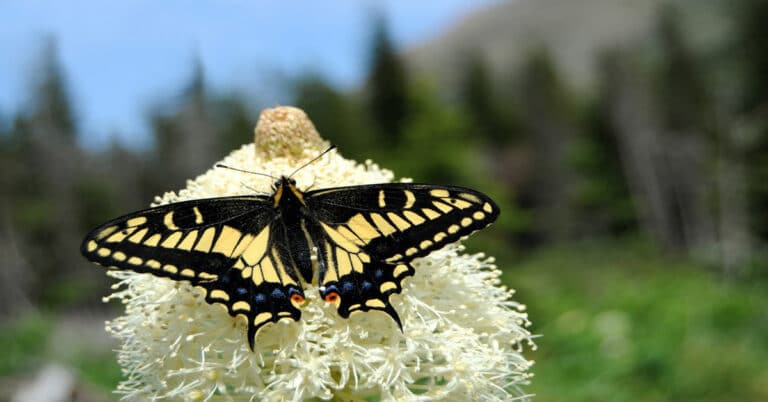Butterfly – Precious Gift Of Nature
Explore 12 butterfly topics with over 125 pages packed full of butterfly information. Our butterfly pages contain articles written by Master of Science degree Entomologist Randi Jones as well as butterfly links to sites all over the web for EVEN MORE information on butterflies! Get involved: check out all the fun butterfly activities and coloring pages. Read fun facts to amaze your friends or learn about butterfly biology. All information is updated frequently!
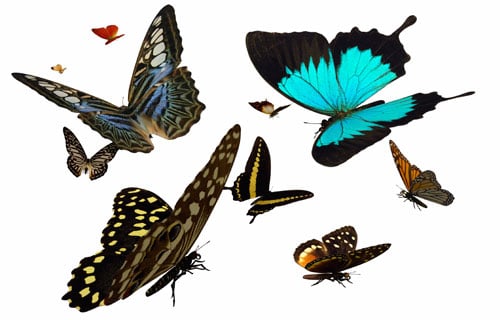
Gardening | Life Cycle | Rearing | Houses & Farms |
Fun Facts | Pictures | Activities | Monarchs |
Live Releases | Butterfly Specimens | Gift Sites | Links |
Butterflies are one of the most flawless creatures on earth. There is rarely a person who is not amazed by their beauty. They are a gift from nature that truly deserves recognition and care.
Butterflies are mostly found in nature and in places like gardens and paddy fields. And they absolutely love flowers and green places. When the beauty of nature, such as flowers and butterflies, is present together, our hearts just bloom with happiness and amazement.
Biology of Butterflies
Butterflies are insects that belong to the order Lepidoptera. In Greek, lepidus means “scales” and the meaning of ptera is “wing“. Lepidoptera is actually a large group of insects. However, it consists mainly of butterflies and moths.
Adult butterflies have four wings that are covered in scales. It is the scale that gives the colors to butterflies. They contain the pigment melanin and uric acid. Melanin gives them brownish or black colors, and uric acid provides yellow colors. However, due to the structural coloration, microstructures also produce different colored scales, such as blue, green, red, and so on.
The body of a butterfly is divided into three. The abdomen, thorax, and head The thorax itself is divided into three segments, and there are a pair of legs on each of them. Most butterfly species are diurnal. They are colorful and have their wings located vertically when resting.
Caterpillars are butterfly larvae. They are characterized by hard heads and mandibles that are so strong that they are used to cutting their food. Caterpillars have a cylindrical body with numerous prolegs but only six true legs. They also have a bright color and contain toxic chemicals.
Butterfly Life Cycle
Butterflies have four main stages in their life cycle. The egg, larva, pupa, and adult are all easily distinguished. The stages can be different depending on the species, but there are some facts that are general and apply to most of them.
Butterfly Eggs
Butterfly eggs are yellow in color and have a hard-ridged shell. There is a thin coating on the egg that is there to prevent it from drying out. At the end of each egg, there is a small opening. The sperm enters the egg from the opening and fertilizes it.
The eggs are stuck to the leaves with a special glue created by the mother butterfly. Each species of butterfly has its own favorite plants to lay its eggs on. The egg stage normally lasts for 3–7 days. However, some species overwinter the eggs, and during that time, they go into diapause.
Caterpillars
A caterpillar is a butterfly larva that has hatched from an egg. Most of the caterpillars eat the eggshell first to gain some strength. They are “crazy eaters” and increase in size pretty quickly. Their body mass can increase by thousands of times what it used to be.
Caterpillars mostly eat plant leaves and always look for food. The phase has a series of development stages, and after the end of each stage, the larva mediates and forms a new cuticle. The mouthparts of these small creatures are pretty powerful for chewing.
Pupa Stage
Caterpillars develop strings of silk around their bodies and attach themselves mostly to the leaves. It varies by species, but the majority of them are hung upside down in their silk pads. Normally, they stay in that stage of the butterfly life cycle for about one or two weeks. Some species also overwinter in the pupa stage.
Adult Butterfly
Pupa transforms into a butterfly with metamorphosis. During the process, the wings undergo mitosis and absorb the nutrients. When the butterfly emerges, the wings are crumpled at first, so it hangs brown and starts to pump them with body fluids. This process may take several hours.
Most adult butterflies can live for about two or three weeks. However, some species, such as Monarch butterflies, can live for months.
Types Of Butterfly
There are approximately 17,500 butterfly types. The variety is wide around us and they can be found in any part of the world. However, there are several species that are the most popular and exceptional among all.
Swallowtail Butterflies
There are approximately 500 species of swallowtail butterflies. They belong to the family of Papilionidae. Not only are they very beautiful, but they are also large in shape. They can be found on any continent except Antarctica.
Swallowtail Butterflies have a tail-like extension at the end of their wings. Wings are typically 80-90 millimeters long.
Monarch Butterfly
Monarch butterflies are one of the most well-known types of butterflies. They are also called the “Kings of all butterflies.” One can easily recognize them by their vibrant colors. The orange, black, and white mix with the black veins and white dots truly are exceptionally beautiful.
They are mostly found in North and South America, Western Europe, and India. The wings can be as long as 12 centimeters.
Karner Blue Butterfly
Karner Blue is among the endangered species of blue butterflies. Their habitat is mainly in US states such as Minnesota, Wisconsin, Michigan, and New York. They are small, delicate, and very beautiful in color.
Female Karner Blue has a grayish-brown shade and a blue color on the topside. It also has a beautiful orange-colored band with black borders. Male Karner Blues have more of a silvery dark blue color on the topside and black margins.
The Karner blue was announced as endangered in 1992 because its population was decreasing rapidly. It was caused by the loss of habitats. The good news is that it managed to be stable during the following years.
Eating Habits of Butterflies
Have you ever wondered where do butterflies live? Well, they can be found in many different types of habitats, such as deserts, grasslands, alpine, forest, wetlands, etc. Some even spend their lives underground. However, they choose their living habitat according to their eating habits.
And yet we still wonder: what do butterflies eat? Well, these little, beautiful creatures have a long tongue that is called a proboscis. They can curl the tongue and use it like a straw. They love to drink the sweet nectar from the nectar plants. This straw-like tongue helps them to suck the juice that is deep in the flower. They especially love Coral Vine, Ixora, Lantana, Firespike, and Jungle Cucumber nectar.
The larvae of most butterfly species are herbivorous, meaning that they only consume plant leaves. However, some can eat insects and can also be predators of ants’ eggs and larvae. They can also be pests in the larva stage and damage crops or trees.
Threats & Dangers – What Eats Butterflies?
The caterpillar stage can be considered one of the most dangerous parts of the butterfly life cycle. They can be victims of weather conditions, diseases, parasites, and predators. Among the hundreds of eggs, only a few can survive and last to the adult stage.
One of the means of defense is chemical defense. Butterflies request the plant toxins and use them to defend themselves from predators. They are mainly polymorphic, meaning that they use mimicry or camouflage to hide from predators. Actually, they are completely harmless, and the only defense mechanism against threats, in most cases, is mimicry.
Some use the “freezing” technique, so they will not appear to look like branches or sticks. Some use deimatic behavior, have white marks at the end, like eyes, and wave their “tails” as if they were snakes. Several species use myrmecophiles, meaning that they have a mutual association with ants and get protection from them. Butterflies are mainly victims of paraspotpods, parasites, wasps, flies, and protozoans.
Do Butterflies Migrate?
Yes, they do, and it is one of the most beautiful things we’ve ever seen. Butterflies normally migrate from colder places to warmer habitats, and it is the most beautiful and breathtaking part of butterfly behavior. They navigate with a “sun compass,” see polarized light, and can find a way even on cloudy days.
Many species, such as the painted lady, Danaine, and monarch, migrate for long distances. However, not even a single one of them completes the whole trip. They migrate for generations. For example, a painted lady covered 9,000 miles during the migration from tropical Africa to the Arctic, and it all took six generations.
The Monarch’s migration became a phenomenon. They migrate from North America to central Mexico. It is considered to be “one of the most spectacular natural phenomena in the world”.
Butterflies in Our Life
We love butterflies and enjoy their beauty and purity. The symbolic meanings of butterflies are as magnificent as the creatures themselves. They represent transformation, hope, life, change, and spiritual rebirth.
Butterflies have become a big part of our culture. They have been around us for a long time, and there are legends, poems, songs, and art dedicated to it. They have appeared in ancient Egyptian reliefs that go back to 3500 years ago. It represented fire and warfare in Aztec civilization. There are countless books, stories, and legends connected to them. So yes, they are magnificent.
The word “butterfly” does not really sound as innocent and calm as it is. Let’s see, how do you say butterfly in different languages? In French, the butterfly translates to “papillon,” so melodic and beautiful. In Portugal, they are called “borboleta.” If you hear someone call a butterfly a “Schmetterling,” you are in Germany. We think that the most beautiful and melancholic one is “Farfalla,” as it is called by Italians.
People loved and liked this colorful creature so much that they started to “collect” it. One of the most popular hobbies for centuries now has been preserving dead butterfly specimens. Observing different species and their characteristics has been very useful for scientists. However, the good news is that it has been replaced by photography and recordings. Also, people have started butterfly gardening, which we think is a great thing to do.
Butterfly Gardening
Butterfly gardening became a thing in the 1980s. Gardeners got their inspiration from English cottage gardens, and today, butterfly rearing has become very popular. Butterfly gardening means maintaining habitats for insects like butterflies, moths, and skippers. Habitat must fulfill the needs of butterflies at all four stages of their life cycle.
There are many butterfly houses & farms that have created the perfect living environment for our small friends, but rearing butterflies is not an easy process. To raise butterflies, one needs to create a habitat that supports the insects.
All butterfly species are different and have different needs. There must be butterfly host plants that provide a good source of food. For example, monarchs and regal fritillaries only consume milkweed or violets.
Butterfly garden plans must also include plants of different heights, colors, and bloom times. It would be great if there were bait stations in the butterfly gardening area. There must be some fruit, tree sap, or carrion nearby so that adult butterflies can get nutrition.
That little friend of ours cares for the environment and nature for us. Just like bees, their bodies collect the pollen from the flowers and spread it throughout the flora. They help fruit, flowers, and vegetables produce seeds. So yes, they will help your plants and flowers bloom and be happy.
Butterfly Facts
- An interesting fact about butterfly behavior is that some larvae, such as Lucaenidae, have a mutual relationship with ants. They communicate with them using vibrations and exchange information about the food. Ants provide protection, and larvae gather honeydew secretions in exchange.
- Too bad for ants if they trust caterpillars of all species. Some, such as large blue caterpillars, can trick ants, go to their colony (as friends) and eat ant eggs and larvae.
- Butterflies use their feet to taste. They test the taste to see if it is good to be their caterpillar’s food. After that, they lay eggs on it.
- Butterflies get minerals from the mud puddle. To supplement their diet, they often gather around the puddles and sip the nutrients. It is called “puddling” and is one of the unique butterfly behaviors.
- Butterflies have exoskeletons. In other words, their skeletons are on the outside of their bodies. It not only protects them but also helps to store water in their bodies.
Bottom Line
Butterflies have been developed in the Cretaceous period. This period is also known as the “Age of Flowering Plants” and goes back to 65 million years ago, the time when dinosaurs roamed the earth. Since then, fascinating creatures have been living on earth and are an important part of the huge ecosystem.
The perfect mix of colors, the beautiful design and shape of their bodies, and creative, different kinds of patterns make those small creatures exceptional and force us to fall in love with them. Not only do they care about the environment for us and help the plants pollinate, but they also give us emotional satisfaction with their existence.

Having discovered a fondness for insects while pursuing her degree in Biology, Randi Jones was quite bugged to know that people usually dismissed these little creatures as “creepy-crawlies”.

